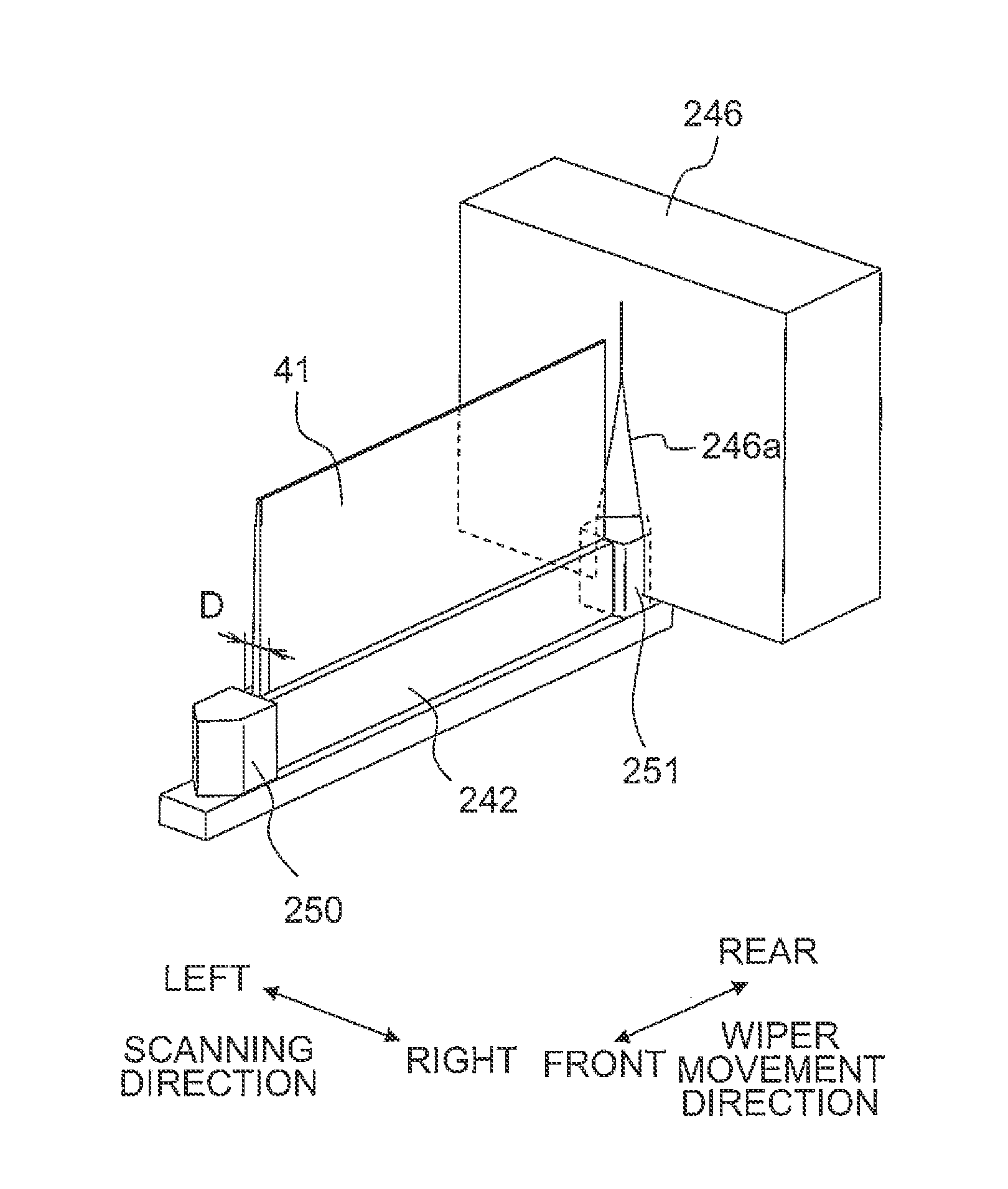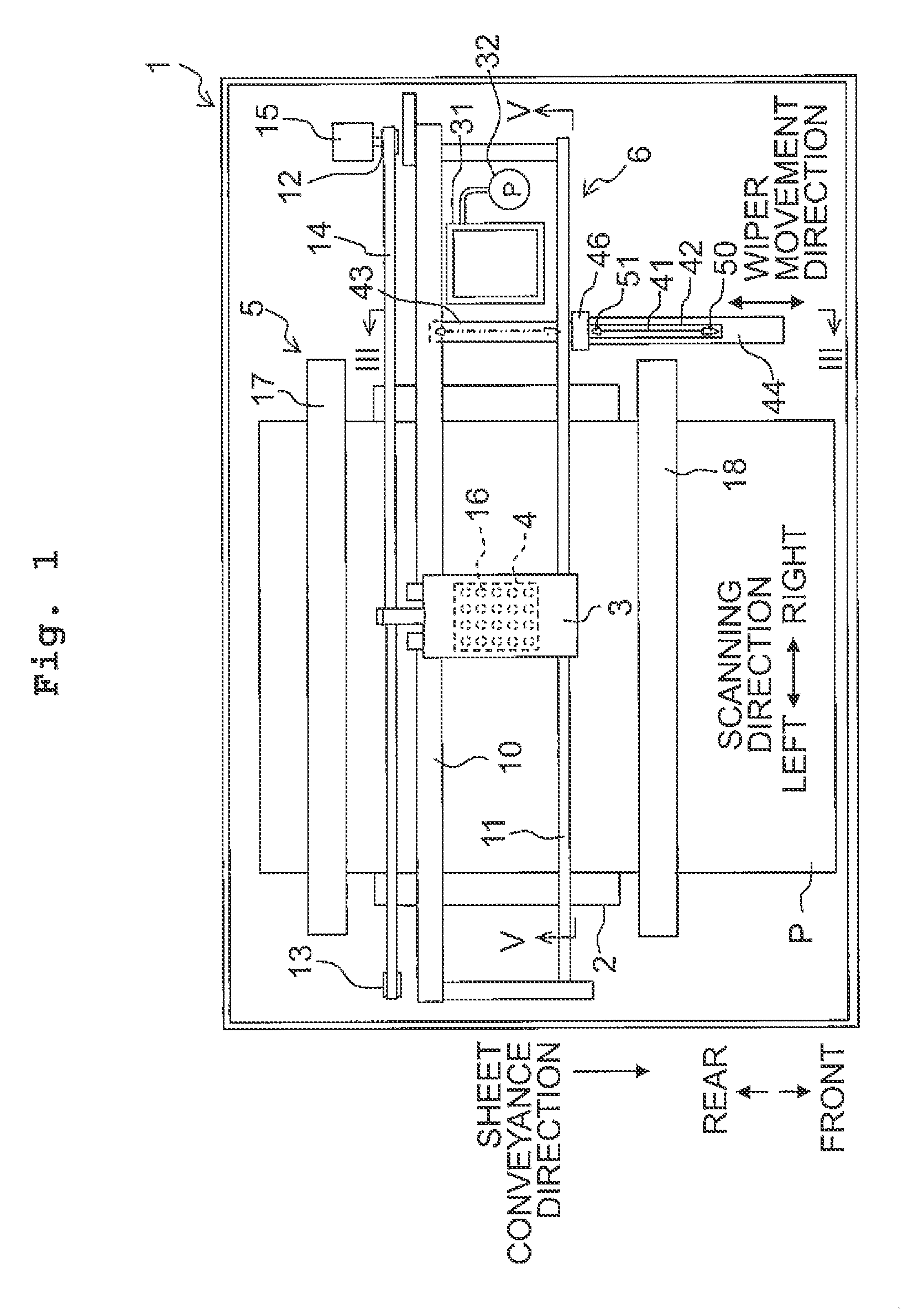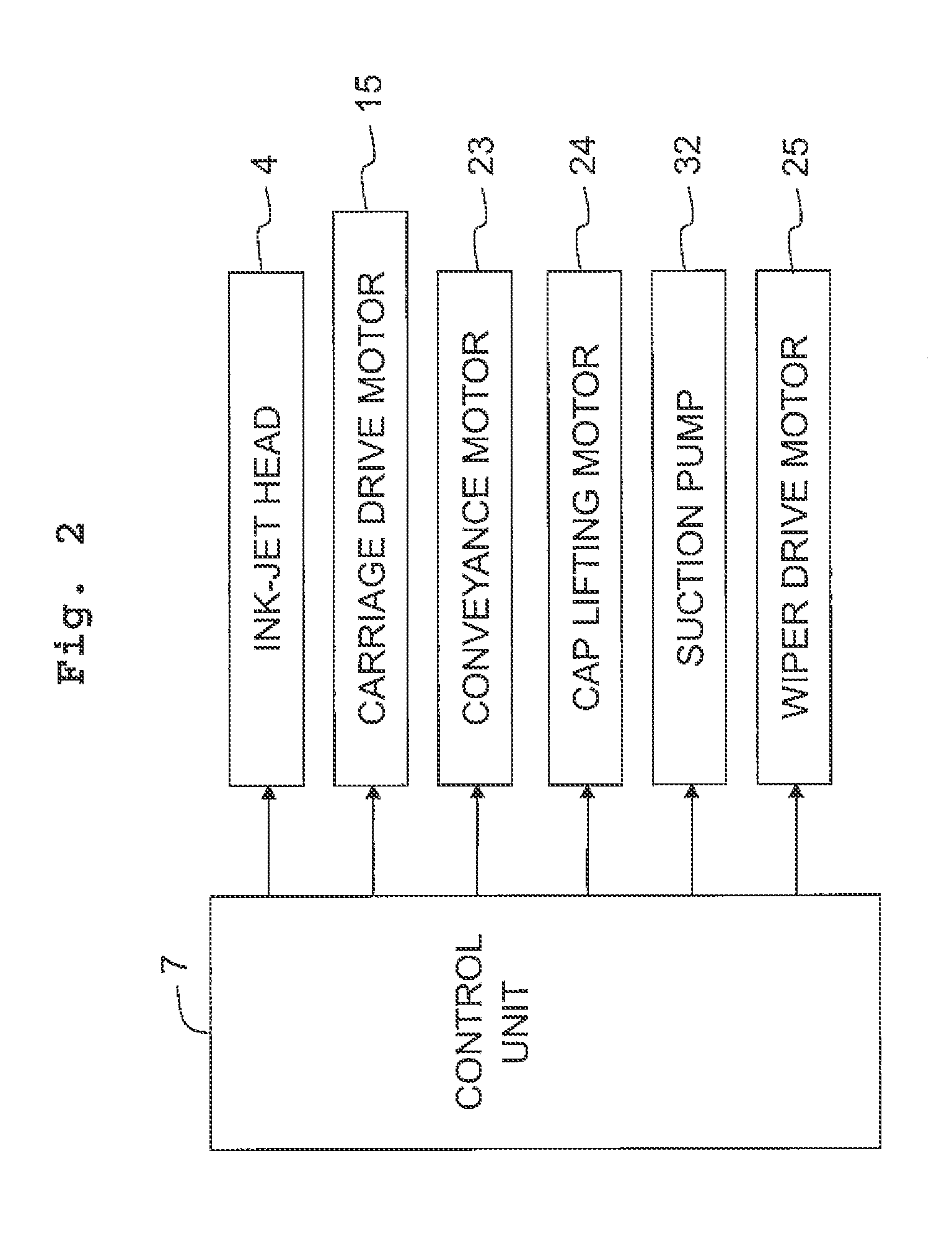Liquid discharge apparatus with wiper cleaner
a technology of liquid discharge apparatus and wiper cleaner, which is applied in the direction of printing, etc., can solve the problems of wiper or the upper part of the wiper cleaner being practically undeformable, and the wiper or the wiper cleaner being liable to get damaged, etc., to regulate and reduce the deformation of the wiper
- Summary
- Abstract
- Description
- Claims
- Application Information
AI Technical Summary
Benefits of technology
Problems solved by technology
Method used
Image
Examples
first embodiment
[0110]The wiper 41 is thin, of which entire thickness is, for example, about 1 mm. The upper end of the wiper 41 is in a tapered shape. This allows the wiper 41 to bend easily when the wiper 41 makes contact with the ink discharge surface 4a, and thereby making it possible to wipe off the ink on the ink discharge surface 4a reliably. When the restoring force or resilience, by which the wiper 41 in the bent state is restored to a normal state, is great, the force, which is transmitted from the wiper 41 to the water-repellent film covering the ink discharge surface 4a, is also great. In the first embodiment, however, since the wiper 41 has the thickness of approximately 1 mm, the resilience is relatively small. This reduces the force transmitting from the wiper 41 to the water-repellent film, and thereby making it possible to prevent the water-repellent film from peeling off.
[0111]The wiper holder 42 includes two space expansion parts 50, 51 which are disposed on the front and rear si...
second embodiment
[0155]The upper end of the wiper 1041 is positioned above the ink discharge surface 4a. As depicted in FIG. 20C and FIG. 20D, when the ink-jet head 4 in the maintenance position moves in the scanning direction (in particular, leftward) with the wiper 1041 being in the wiping position, the ink adhering to the ink discharge surface 4a of the ink-jet head 4 is wiped with a right surface 1041s1 (a first surface of the present teaching) of the wiper 1041. In the second embodiment, a carriage drive motor 15 corresponds to a second movement mechanism of the present teaching. The ink wiped is more likely to adhere to the right surface 1041s1 of the wiper 1041, and is less likely to adhere to a left surface 1041s2 (a second surface of the present teaching). The length of the wiper 1041 in the front-rear direction is substantially the same as or longer than the length of the ink discharge surface 4a in the front-rear direction. The wiper 1041 can wipe the entire ink discharge surface 4a durin...
third embodiment
[0202]The wiper 2041 is thin, of which entire thickness is, for example, about 1 mm. The upper end 2041u of the wiper 2041 is in a tapered shape. This allows the wiper 2041 to bend easily when the wiper 2041 makes contact with the ink discharge surface 4a, and thereby making it possible to wipe off the ink on the ink discharge surface 4a reliably. When the restoring force or resilience, by which the wiper 2041 in the bent state is restored to a normal state, is great, the force, which is transmitted from the wiper 2041 to the water-repellent film covering the ink discharge surface 4a, is also great. In the third embodiment, however, since the wiper 2041 has the thickness of approximately 1 mm, the resilience is relatively small. This reduces the force transmitting from the wiper 2041 to the water-repellent film, and thereby making it possible to prevent the water-repellent film from peeling off.
[0203]The wiper cleaner 2046 is held by a cleaner holder 2047 and is disposed between the...
PUM
 Login to View More
Login to View More Abstract
Description
Claims
Application Information
 Login to View More
Login to View More - R&D
- Intellectual Property
- Life Sciences
- Materials
- Tech Scout
- Unparalleled Data Quality
- Higher Quality Content
- 60% Fewer Hallucinations
Browse by: Latest US Patents, China's latest patents, Technical Efficacy Thesaurus, Application Domain, Technology Topic, Popular Technical Reports.
© 2025 PatSnap. All rights reserved.Legal|Privacy policy|Modern Slavery Act Transparency Statement|Sitemap|About US| Contact US: help@patsnap.com



